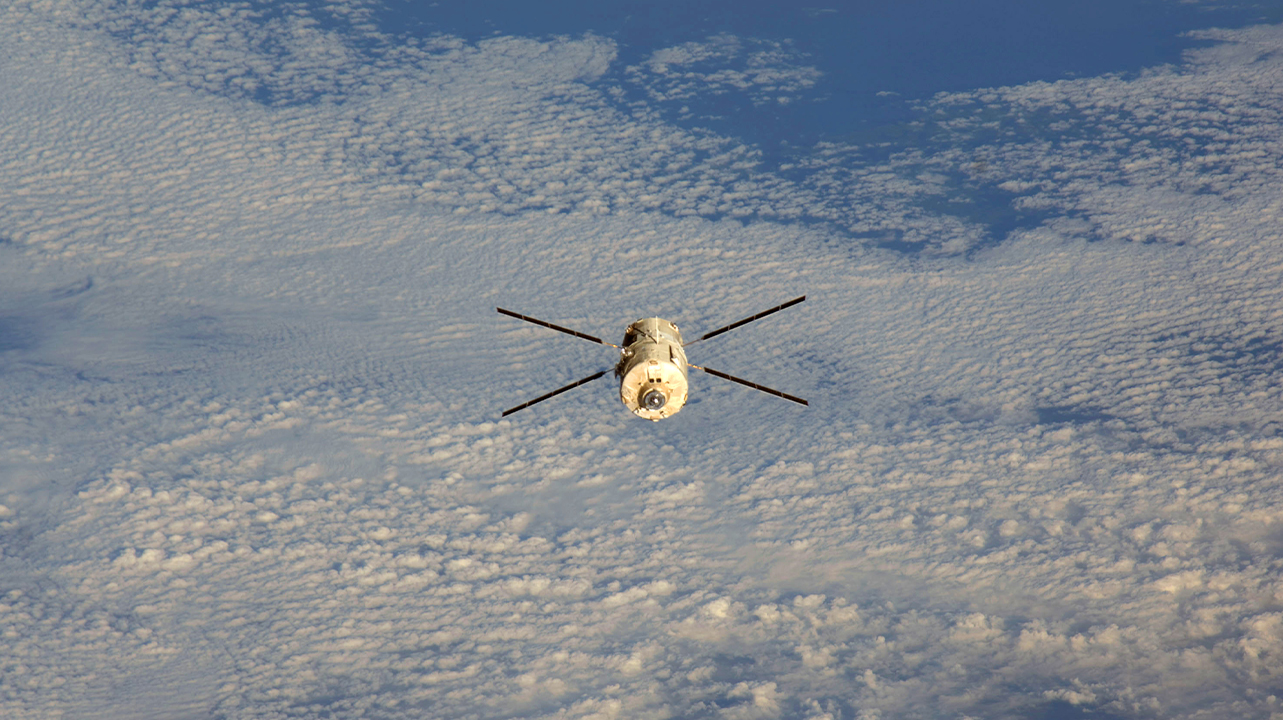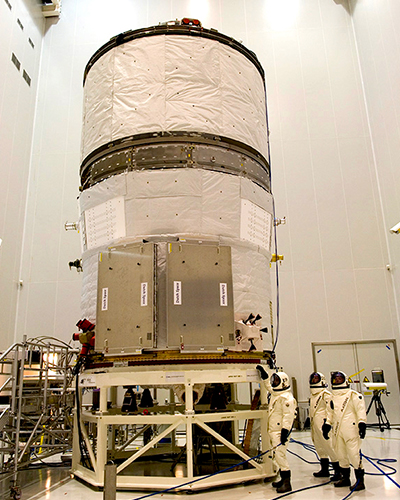Ariane 5: A unique launcher, iconic missions - ATV
28.07.2023

Ariane 5: a career spanning 27 years and 111 successful launches. Ariane 5 lifted off for the last time on July 4. Here, we continue our look back at some of the rocket’s most significant missions.
On March 9, 2008, at 1:03 local time, an Ariane 5 rocket blasted off into the night skies of French Guiana.
Under its fairing was the first Automated Transfer Vehicle (ATV), named ‘Jules Verne’, an enormous freighter craft 10 meters long and 4.5 meters in diameter, and weighing nearly 20 tons – twice as much as the largest payload ever carried by an Ariane rocket before.
It was Europe’s first orbital service vehicle, carrying over seven tons of vital supplies – water, oxygen, fuel, food, clothing, and scientific equipment – for the crew of the International Space Station (ISS).
A technological masterwork
The uncrewed ATV was the largest and most complex spacecraft ever developed and built in Europe, and the first European spacecraft to execute completely autonomous docking with an orbiting station. Despite its mass and 22-meter span, the ATV was so precise that it could connect with the docking port of the ISS traveling a speed of 28,000 km/h and with a accuracy of under 10 cm.
©ESA©CNES©ARIANESPACE
A special launcher for a special passenger
Orbit injection of the ATV called for a specially adapted version of the Ariane 5 launcher. While the lower stage is identical to that of an Ariane 5 ECA, this Ariane 5 ES has a re-ignitable upper stage powered by an Aestus engine.
This re-ignition capability was necessary to be able to place the ATV into an orbit from which it could reach the ISS.
In contrast to a ‘standard’ geostationary satellite launch mission, Ariane 5 needed to place the ATV into a circular, as opposed to elliptical, transfer orbit. To achieve this, the upper stage’s Aestus engine, which normally burns for only one powered flight phase, was ignited three times.
The re-ignitable upper stage functioned flawlessly, and positioned the ATV on the target flight path. Ariane 5 gently carried its passenger to low Earth orbit after a perfectly-executed one-and-a-half hour sequence, involving two upper stage re-ignitions. Ariane 5 ES had functioned flawlessly, and positioned the ATV on the target flight path.
The ATV ‘Jules Verne’ docked with the ISS on April 3, after a series of approach maneuvers.

©ESA©CNES©ARIANESPACE©SERVICE OPTIQUE
And afterwards?
The Jules Verne remained docked with the ISS for nearly six months, impeccably performing its mission to resupply and raise the orbit of the station. It delivered 850 kg of fuel for the Station, and its propulsion system was used on 14 occasions to reboost the 350 tons of the ISS to a higher orbit, to control the attitude of the station, and for debris avoidance maneuvers.
It undocked from the ISS on September 5, 2008. Now filled with waste, it initiated an automatic re-entry to Earth and disintegrated in the dense layers of the atmosphere on September 29 that same year.
Ariane 5 ES was to subsequently launch four other ATV vehicles, which all carried out their missions perfectly in 2011, 2012, 2013 and 2014.